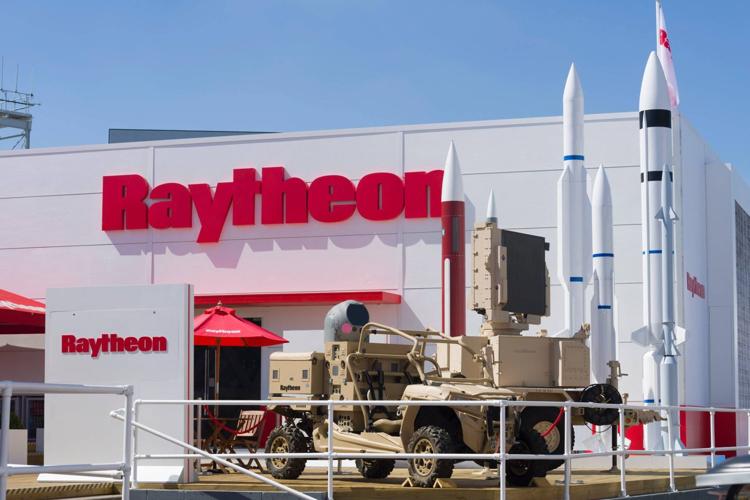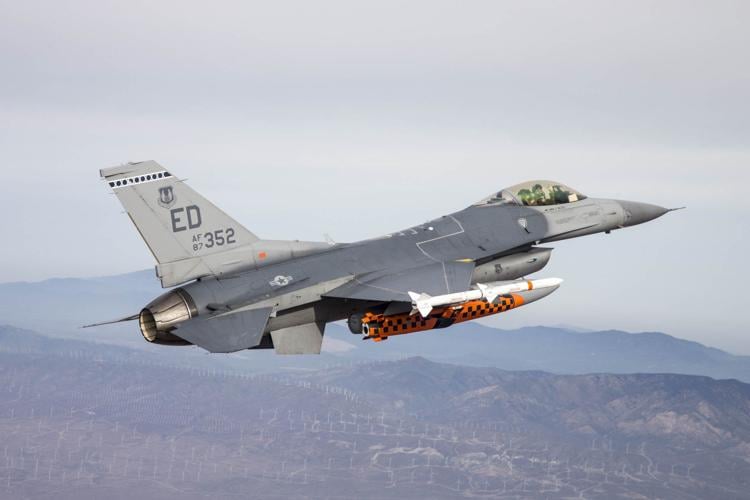Defense contractor Raytheon touted milestones for several key weapon systems made by Tucson-based Raytheon Missile Systems at the 2018 Farnborough International Airshow near London.
The biennial trade show, which ends Sunday, July 22, features one of the world’s biggest trade exhibitions for the aerospace and defense industries as well as a public airshow.
During the show, Raytheon announced key developments for several programs managed by Missile Systems, Southern Arizona’s largest private employer.
COYOTE GETS TEETH
In perhaps the biggest news of the week, Raytheon said its small Coyote unmanned aircraft could be fielded by the U.S. Army by the end of the year to track and destroy enemy drones.
It is the first reported development of an armed version of the expendable, tube-launched Coyote, which has previously been used for surveillance and reconnaissance missions.
The company said it added a target seeker and explosive warhead to answer the Army’s “urgent operational need” for counter-drone systems.
The Coyote will be paired with an electronically scanned-array Ku-band radar that can detect and accurately tracks all sizes of unmanned aircraft threats, Raytheon said. The drones can be launched in “swarms” and programmed to operate autonomously.
Raytheon is also finalizing development of advanced Coyote variants that will fly faster and farther.
The Coyote was originally developed in Tucson by a small company that later was acquired by Raytheon and is now housed at Missile Systems.
JOINT STRIKE MISSILE
Raytheon announced that Norway’s Ministry of Defense successfully test fired a Joint Strike Missile from an F-16 Fighting Falcon, maneuvering past a decoy and flying low to avoid radar to hit a surface target.
An evolution of the Naval Strike Missile that was originally developed for Norway’s navy, the weapon has been offered by Raytheon and Kongsberg for the U.S. Navy’s over-the-horizon weapon system.
It is also scheduled to be fitted internally on the F-35 Joint Strike Fighter, which will be flown by Norway and other allies as well as the U.S. Air Force, Navy and Marines, to attack ships and ground targets at long ranges.
The recent test at the Utah Test and Training Range marked the end of a major test phase, the Air Force and Raytheon said.
‘STORMBREAKER’ IN FINAL TESTING
Raytheon said its StormBreaker precision-guided bomb, formerly called the Small Diameter Bomb II, has entered operational testing, following a successful readiness review this past spring.
The bomb’s tri-mode seeker uses a combination of infrared, radar and semi-active laser targeting technologies, giving pilots the ability to destroy moving targets on the battlefield in adverse weather from long ranges.
Operational test flights, one of the last steps before full production, are expected to begin this summer, Raytheon said.
The weapon will be fielded first on the F-15E Strike Eagle, with plans to adapt it to the F-35 by 2022.
Raytheon already is under contract to make more than 700 SDB IIs under more than $100 million in low-rate production contracts that started in mid-2015.
The Pentagon plans to buy more than 17,000 StormBreakers in a program expected to be worth some $4 billion over time.
Significant sales to U.S. allies are also expected. Last fall, the U.S. State Department approved an $815 million sale of 3,900 StormBreakers to Australia.
MISSILE KILLERS
Raytheon also announced it is producing 44 Standard Missile-3 Block IB ballistic-missile interceptors under a $467 million contract with the U.S. Missile Defense Agency.
The SM-3 Block IB is mainly used for regional defense as part of the ship-based Aegis Ballistic Missile Defense System, but it also is operational at a land-based site in Romania.
This fiscal year 2018 contract is part of an initial 2015 contract announcement of $2.4 billion, for planned production through fiscal 2018, the company said.
Production will be completed at Raytheon’s Space Factory in Tucson, and final assembly will take place at the company’s integration facility in Huntsville, Alabama, Raytheon said.






